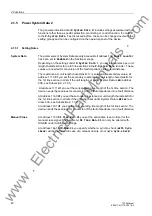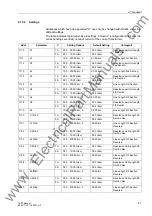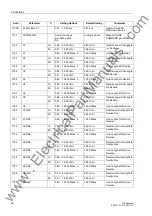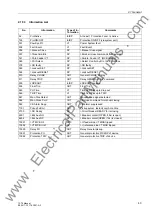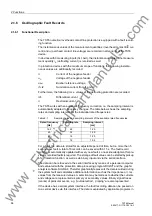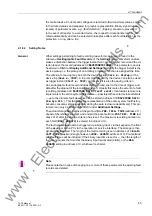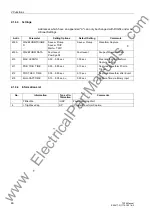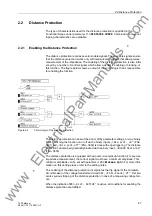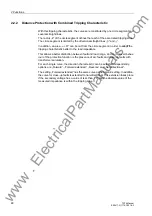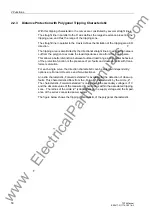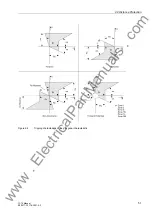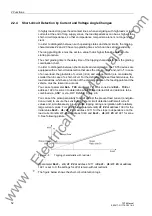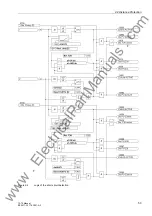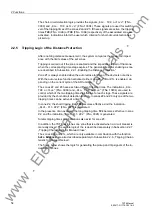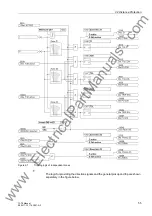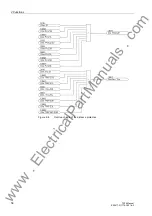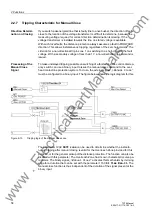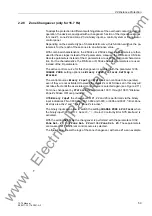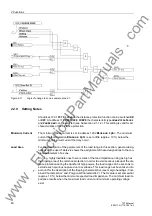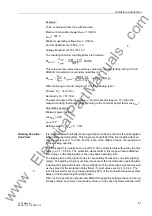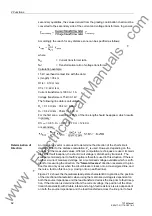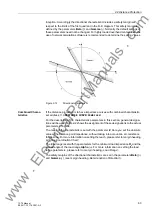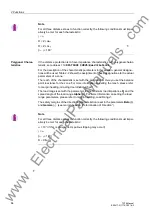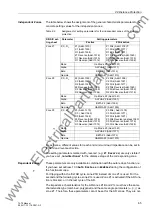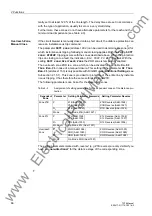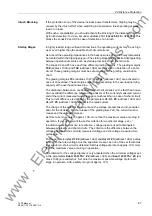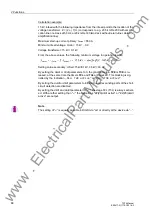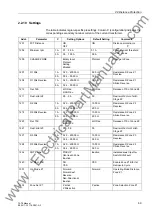
2 Functions
54
7ST6 Manual
E50417-G1176-C251-A3
The short-circuit detection logic provides the signals
„Dis. T2K active“
(FNo.
3909) and
„Dis. T3K active“
(FNo. 13804). These signals are used for switcho-
ver of the tripping times of the zones Z2 and Z3. If these signals are active, the tripping
times
T2K
(FNo.
1346
) or
T3K
(FNo.
1366
) respectively of the associated zone are
activated. Indications inform the user which criterion for short-circuit detection has
picked up.
2.2.5
Tripping Logic of the Distance Protection
After enabling distance measurement, the system compares the measured imped-
ance with the limit values of the set zones.
Tripping is carried out if the zone is enabled and the impedance is part of that zone
when the corresponding time stage expires. The general criteria for enabling a zone
are described in Subsection 2.2.1 „Enabling the Distance Protection“.
Zone Z1 is always enabled when the auto reclose function of the device is not active.
With the auto reclose function activated, either zone Z1, Z1B or Z1L is enabled, de-
pending on the current cycle of the AR function.
The zones Z2 and Z3 have each two different tripping times. The indications
„Dis.
T2K active“
(FNo. 3909) and
„Dis. T3K active“
(FNo. 13804) are used to
control which of the two tripping times is effective for each stage. These signals are
provided by the short-circuit detection function. In zones Z2 and Z3 only one of the two
tripping times can be active at a time.
In zone Z2, the short tripping time
T2K
becomes effective, and the indication
„Dist.Flt.Z2K“
(FNo. 3925) is generated.
In the presence of an overload, the long tripping time
T2L
becomes effective in zone
Z2, and the indication
„Dist.Flt.Z2L“
(FNo. 3926) is generated.
Similar tripping times and indications also exist for zone Z3.
In addition, the 7ST6 device has one zone that is activated when a circuit breaker is
manually closed. The enable logic of the is described separately in Subsection 2.2.7.
„Tripping Characteristic for Manual Close“.
The zones Z1B and Z1L, which are only available in combination with the function
Auto Reclose
, are also described separately in Subsection 2.2.6. „Tripping Charac-
teristic for Manual Reclose“.
The figure below shows the logic for generating the pickup and trip signals of the in-
dependent zones.
www
. ElectricalPartManuals
. com

